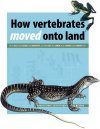Call us (08:30-17:00 UK)
01803 865913International
+44 1803 865913Need Help?
Help pagesWildlife Survey & Monitoring
Field Guides & Natural History
Academic & Professional Books
- Evolutionary Biology
- Evolution
- Human Evolution & Anthropology
- Cladistics, Phylogeny & Taxonomy
- View All
British Wildlife
British Wildlife is the leading natural history magazine in the UK, providing essential reading for both enthusiast and professional naturalists and wildlife conservationists. Published eight times a year, British Wildlife bridges the gap between popular writing and scientific literature through a combination of long-form articles, regular columns and reports, book reviews and letters.
Conservation Land Management
Conservation Land Management (CLM) is a quarterly magazine that is widely regarded as essential reading for all who are involved in land management for nature conservation, across the British Isles. CLM includes long-form articles, events listings, publication reviews, new product information and updates, reports of conferences and letters.












![Le Lagerstätte de La Voulte: Un Environnement Bathyal au Jurassique [The Lagerstätte of La Voulte: A Bathyal Environment in the Jurassic]](http://mediacdn.nhbs.com/jackets/jackets_resizer_medium/18/183483.jpg?height=150&width=118)

![La Flore Fossile du Bassin Houiller de Saint-Etienne [The Fossil Flora of the Bassin Houiller of Saint-Etienne]](http://mediacdn.nhbs.com/jackets/jackets_resizer_medium/61/61163.jpg?height=150&width=120)












![Kame no Kōra wa Abarabone: Jintai de Arawasu Ugokumonozukan [Turtle Shells Have Ribs: A Picture Book of Animal Anatomy Represented by the Human Body]](http://mediacdn.nhbs.com/jackets/jackets_resizer_medium/24/249897.jpg?height=150&width=99)
![Atlas des Mammifères Sauvages de France, Volume 1: Mammifères Marins [Atlas of Wild Mammals of France, Volume 1: Marine Mammals]](http://mediacdn.nhbs.com/jackets/jackets_resizer_medium/23/233077.jpg?height=150&width=108)

![Atlas des Mammifères Sauvages de France, Volume 2: Ongulés et Lagomorphes [Atlas of Wild Mammals of France, Volume 2: Ungulates and Lagomorphs]](http://mediacdn.nhbs.com/jackets/jackets_resizer_medium/25/252352.jpg?height=150&width=107)
![Atlas des Mammifères Sauvages de France, Volume 3: Carnivores et Primates [Atlas of Wild Mammals of France, Volume 3: Carnivores and Primates]](http://mediacdn.nhbs.com/jackets/jackets_resizer_medium/26/263780.jpg?height=150&width=106)



![Antoine-Laurent de Jussieu (1748-1836): Fabrique d'une Science Botanique [Production of Botanical Science]](http://mediacdn.nhbs.com/jackets/jackets_resizer_medium/25/259747.jpg?height=150&width=103)


![Les Chauves-Souris de Guyane [The Bats of French Guiana]](http://mediacdn.nhbs.com/jackets/jackets_resizer_medium/13/134247.jpg?height=150&width=100)
![Les îles Saint-Paul et Amsterdam (Océan Indien Sud): Environnement Marin et Pêcheries [Saint-Paul and Amsterdam Islands (South Indian Ocean): Marine Environment and Fisheries]](http://mediacdn.nhbs.com/jackets/jackets_resizer_medium/26/260268.jpg?height=150&width=107)